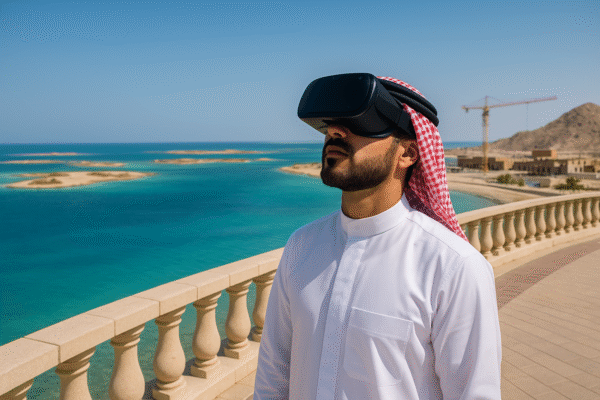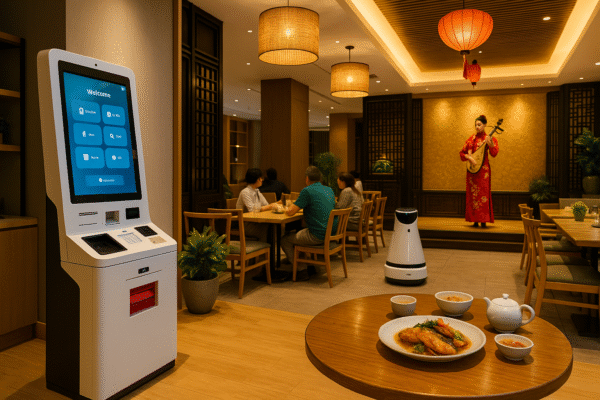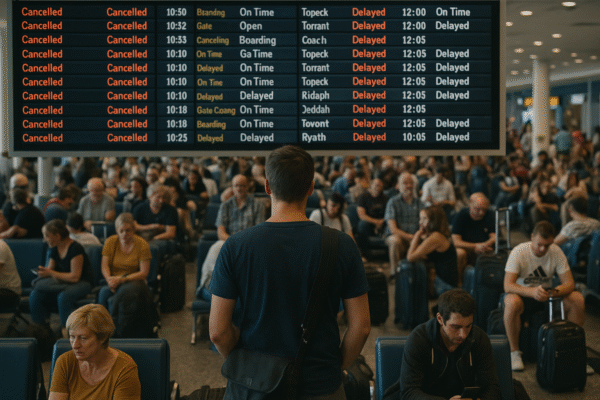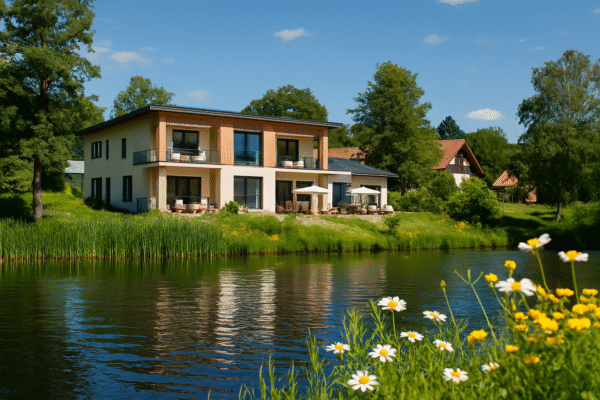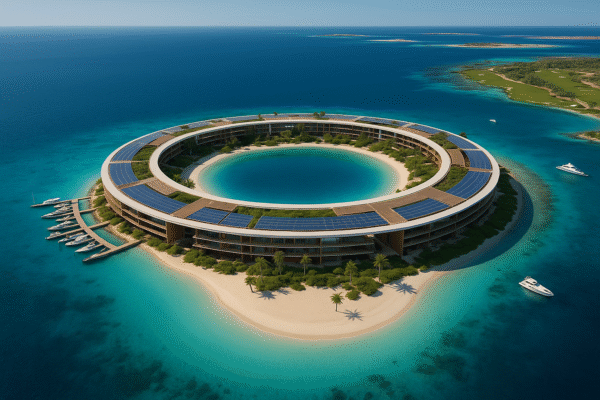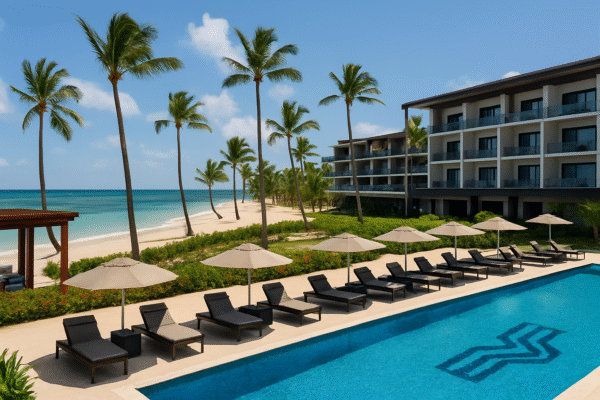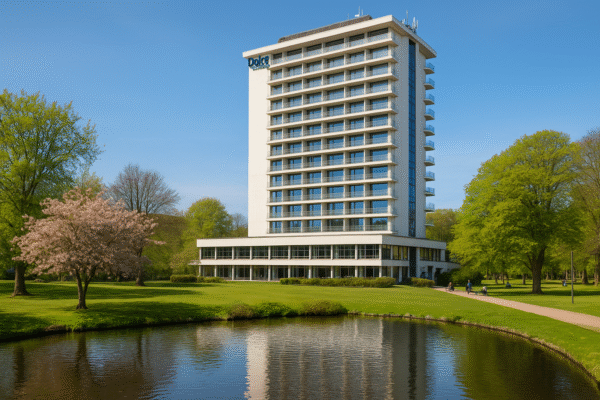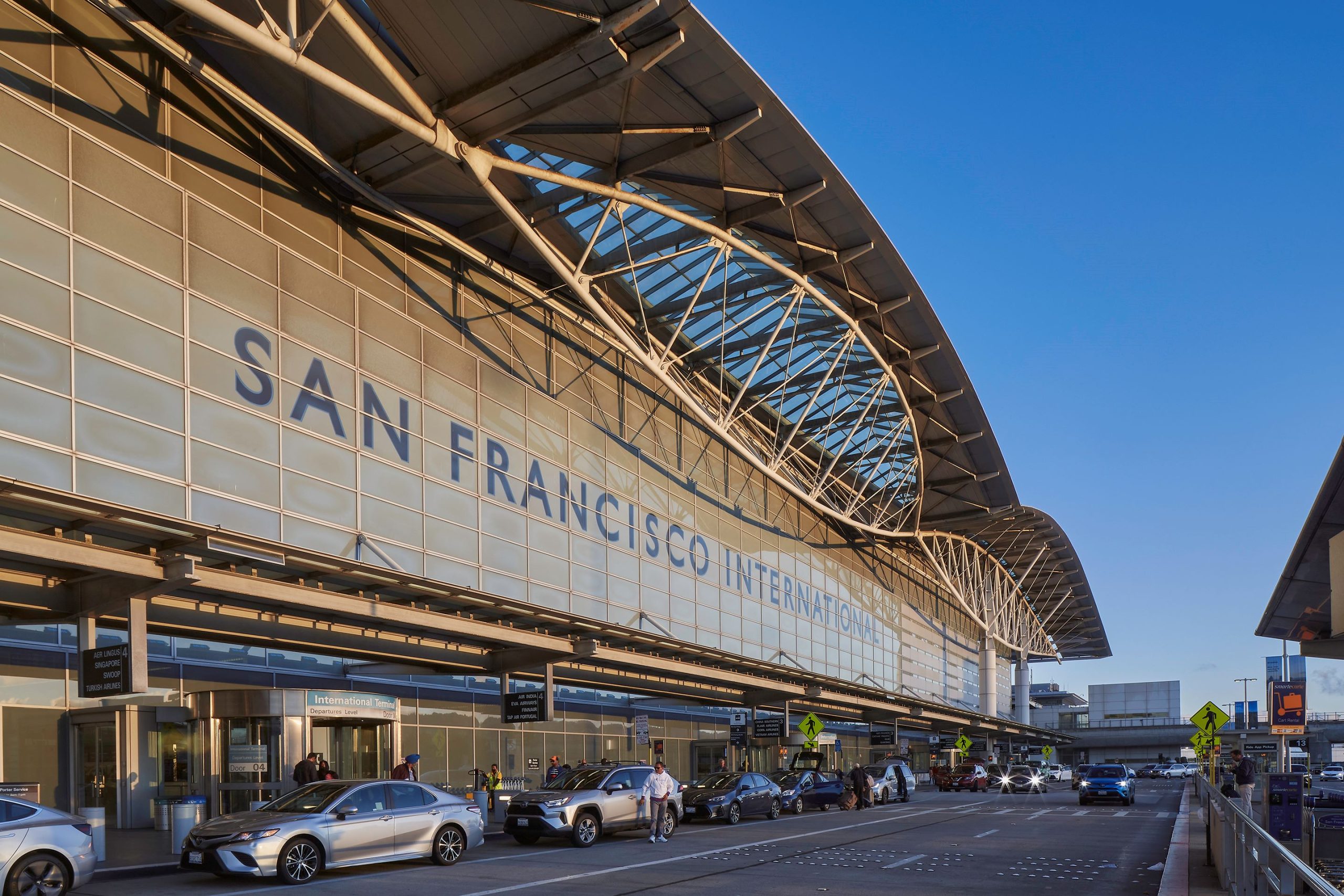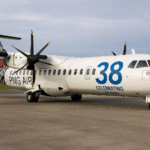Two of America’s most forward-thinking airports—San Francisco International Airport’s Harvey Milk Terminal 1 and Portland International Airport’s reimagined Main Terminal—have been officially recognised among the world’s most beautiful airport terminals by the 2025 Prix Versailles Awards. Celebrated for their sustainability, cultural relevance, and architectural innovation, both terminals are redefining what it means to travel through a modern airport.
Portland International Airport: An Urban Forest Under Glass
Portland International Airport (PDX), often lauded for passenger satisfaction, now adds global design acclaim to its portfolio. The new Main Terminal, designed by ZGF Architects, evokes the tranquility of the Pacific Northwest forest. Central to the renovation is a nine-acre curved timber roof crafted from sustainably harvested wood sourced within a 300-mile radius of the airport. The sweeping canopy creates a natural, warm aesthetic that brings the outdoors inside.
The project features over 100 native plant species, mature trees, and curated seating areas flooded with natural light. These elements are rooted in the biophilic design philosophy—an approach that connects people to nature through architecture. According to the Port of Portland, this design reduces stress, improves passenger comfort, and reflects Oregon’s environmental values.
PDX’s updated terminal isn’t just beautiful—it’s built with resilience and the climate in mind. The project uses local, low-carbon materials and integrates sustainable systems to reduce energy consumption while supporting the airport’s goal of net zero carbon emissions by 2050.
San Francisco International Airport: Honouring a Legacy Through Innovation
On the West Coast, San Francisco International Airport’s Harvey Milk Terminal 1 has become a beacon of inclusive and sustainable design. Named in honour of Harvey Milk, the pioneering LGBTQ+ civil rights leader and San Francisco supervisor, the terminal embodies both symbolic and functional excellence.
Designed by Gensler, the terminal’s 25 gates are framed by soft, undulating ceilings and large round windows that let in abundant natural light. Unique artworks, curated specifically for the space, line the halls—each installation reinforcing Milk’s message of diversity and unity.
But what truly sets Harvey Milk Terminal 1 apart is its commitment to environmental performance. The terminal has slashed its carbon emissions by 79% and reduced energy use by nearly 60%. Instead of broadcasting announcements across the terminal, information is delivered via gate-specific zones, helping maintain a calm atmosphere while reducing noise pollution.
SFO’s transformation aligns with the City of San Francisco’s Green Building Ordinance, pushing for zero net energy buildings and climate-resilient infrastructure across all public services.
Global Recognition at the 2025 Prix Versailles Awards
The Prix Versailles Awards, hosted annually by UNESCO and the International Union of Architects, celebrate excellence in architecture across retail, travel, hospitality, and public services. Airports are evaluated not only on their aesthetic appeal but also their cultural impact, innovation, and environmental responsibility.
In addition to PDX and SFO, this year’s winners included:
- Yantai Penglai International Airport Terminal 2 (China)
- Marseille Provence Airport Terminal 1 (France)
- Roland Garros Airport Arrivals Terminal (Réunion Island, France)
- Kansai International Airport Terminal 1 (Osaka, Japan)
The inclusion of two U.S. airports in this elite list reinforces North America’s growing influence in airport design and infrastructure sustainability.
Creating a New Passenger Experience
Gone are the days when airports were synonymous with sterile environments and logistical headaches. In Portland and San Francisco, the travel experience has been reimagined as an opportunity to slow down, connect with culture, and begin a journey in a space that feels personal and inspiring.
Travelers passing through PDX often describe the terminal as “a walk in the woods,” while those at SFO note the serene ambiance and spacious interiors that make navigating the airport easier and more enjoyable.
This architectural evolution reflects a broader trend: airports are becoming integral to the tourism and travel narrative. They are not merely transit points but symbolic entryways into a city’s culture, values, and environmental commitments.
An Investment in the Future of Air Travel
As global tourism rebounds and air traffic increases, investments in airport infrastructure are accelerating. U.S. airports, often criticized in the past for outdated terminals, are now leading by example. Projects like the PDX terminal upgrade and Harvey Milk Terminal 1 show that it is possible to merge aesthetic sophistication, environmental stewardship, and operational functionality.
Moreover, these improvements are delivering economic benefits. Airports that offer a welcoming, efficient experience tend to attract more passengers, encourage longer layovers, and boost spending in airport retail and hospitality.
Conclusion: Setting the Standard for Future Terminals
With recognition from the 2025 Prix Versailles, Portland and San Francisco have raised the bar for airport architecture worldwide. They’ve shown that beauty and sustainability can go hand-in-hand—and that the airport journey can be just as memorable as the destination itself.
As air travel continues to evolve, more terminals may follow suit, embracing designs that prioritise nature, cultural significance, and sustainability. For now, travellers heading to or from the West Coast can enjoy a glimpse of the future—one that starts the journey with serenity, pride, and a strong sense of place.
For more travel news like this, keep reading Global Travel Wire


